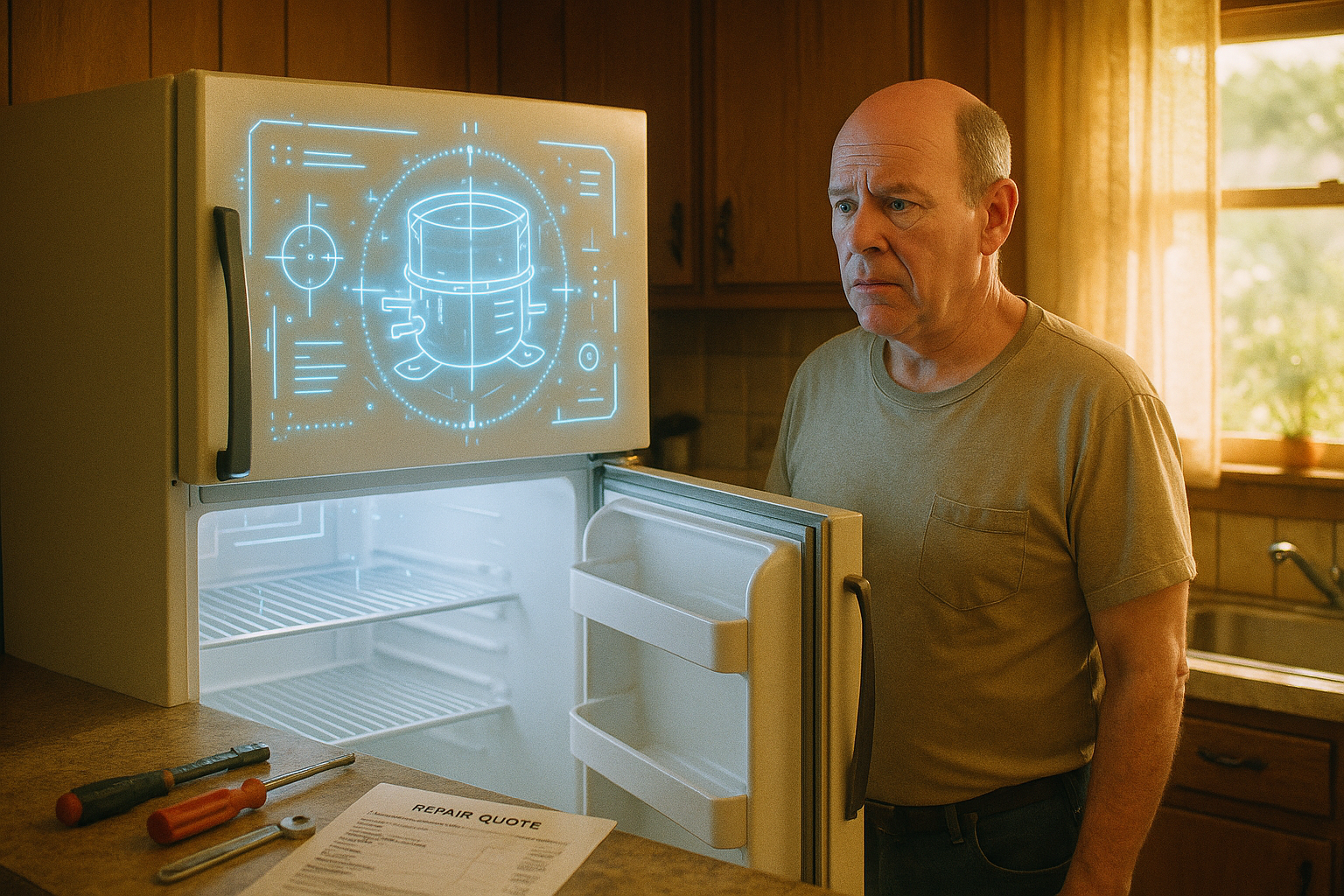Fri Jul 25 - Written by: Brendan McNulty
Week 30: Using AI to Save My Fridge

Week 30: Using AI to Save My Fridge
(and avoid getting fleeced by repair quotes)
My fridge died yesterday. Not the dramatic, sparks-flying kind of death—just the quiet, soul-crushing kind where your food starts warming up and you realize you’re about to lose a week’s worth of groceries.
A couple of days before it gave up completely, the lights had been flickering. I’d used ChatGPT to analyze photos and figure out how to replace the bulbs, but it wasn’t super helpful. Then the whole thing conked out.
I called in a repair guy I’d used before. Here’s the thing: I’m not handy at all, but my fridge is only 3-4 years old. Yet somehow it apparently has four different types of motherboards, five different power boards, and enough electronic complexity to make a spaceship jealous.
The quote I got was… ambitious. Control module, two power supply units, a power module, plus labor. Roughly a third of what a brand new fancy fridge would cost. I needed the best, quickest, cheapest fix so my food doesn’t spoil and my lifestyle isn’t completely derailed.
The Process
Here’s how I tackled it:
1. Getting a Reality Check
I fed the entire repair quote into ChatGPT. I wanted to know if I was about to get fleeced or if this was genuinely necessary
2. Adding Context for Better Analysis
ChatGPT’s initial response was helpful but generic. So I gave it more details: how old the fridge was, how gung-ho the repair guy seemed, and that there hadn’t been any power surges or obvious causes for multiple system failures.
3. Getting a Battle Plan
When I mentioned I was planning to call Siemens directly, I asked for a script. This was where things got really useful—it gave me trap questions to ask, negotiation tactics, and even suggestions about reconditioned parts.
4. AI vs AI Showdown
For good measure, I gave Perplexity the same brief and made ChatGPT fight against its insights. (I liked ChatGPT better because it was calling BS on Perplexity’s “cascading faults” theory.)
The Outcome
ChatGPT gave me exactly what I needed: a no-BS breakdown that felt like advice from a helpful uncle who actually knows about appliances.
It confirmed the quote was technically legitimate in terms of pricing—the parts really do cost that much in South Africa, and the labor rates were fair. But it also spotted the red flags I’d missed:
- No explanation for why multiple units had supposedly failed simultaneously
- No diagnostic photos or detailed troubleshooting steps
- Potentially over-engineered or overly conservative approach
Most importantly, it gave me the confidence and tools to get a second opinion. The script for calling Siemens was gold—it included questions I never would have thought to ask and negotiation tactics that actually worked.
Key Takeaway
AI isn’t just for creative projects or coding experiments. Sometimes its most valuable use is as a pragmatic advisor that can quickly analyze complex situations and give you the confidence to push back when something doesn’t smell right.
Pro Tips for Beginners:
- Give Context, Get Better Advice: The more specific details you provide about your situation, the more targeted and useful the AI’s response becomes.
- Ask for Scripts and Action Plans: Don’t just ask “what should I do?”—ask for specific conversation starters, questions to ask, and tactical approaches.
- Pit AIs Against Each Other: Getting multiple perspectives and having them critique each other’s advice can reveal blind spots and give you more confidence in the final recommendation.
Want to Try It Yourself?
- Use ChatGPT or Claude for analyzing quotes, contracts, or complex service recommendations
- Always provide context about your specific situation rather than asking generic questions
- Ask for actionable scripts when you need to have difficult conversations
- Don’t be afraid to get second (or third) AI opinions on important decisions
What’s Next?
Siemens is coming to save the day. My fridge is still dead, my food is still warming up, but I feel infinitely more confident about navigating this whole mess. Sometimes the best AI experiment is the one that solves a real problem you’re actually facing.